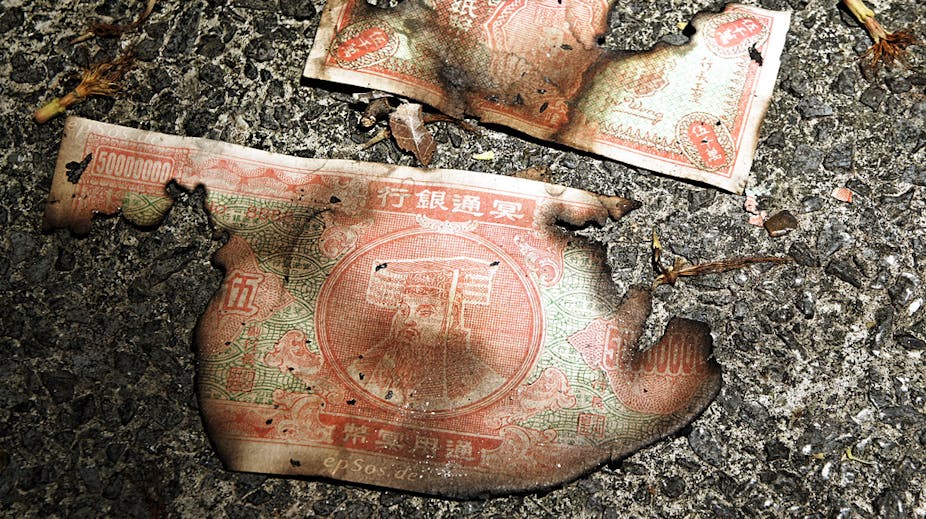Recent analysis by Morgan Stanley suggests China may be approaching a so-called “Minsky moment”. A Minsky moment, named for American economist Hynan Minsky, is when debt-induced financing becomes unsustainable; the authorities act to restrict the speculative boom; and a meltdown starts. That would have immense implications for the global recovery, but we shouldn’t be too fearful.
Scenarios for a slowdown in the Chinese economy have been pored over for years and many analysts do expect the financial and construction booms to come to an end. Fears about the global impact of China’s slowdown are understandable: most trade and financial flows are dependent in some way on Chinese consumers, markets and businesses. It was consumption in China and other emerging markets which allowed the western world to avoid deep depression in the wake of the 2007-09 crisis. A slowdown could potentially destroy the feeble recovery in the North Atlantic and European economies.
So it is not surprising that in charting the scenarios for potential crisis or slowdown, commentators turn to Hyman Minsky, who devoted his life to the study of financial instability and crisis. His analysis of the US economy in the 1980s and 1990s found that conditions for a new Great Depression were ripe in the structure of American financial capitalism.
It wasn’t entirely doom and gloom: Minsky also found that the presence of well-functioning institutions (a central bank, ready and able to step in and save the financial system, and a government ready and able to stimulate demand, employment and growth), could head off the threat. However Minsky was not accepted by mainstream academia during his lifetime and was confined to the margins of his profession.
Stability, fragility
Today’s commentators, concerned with apparent asset bubbles and credit booms, often speak about a “Minsky moment” in the financial system, repeating his wise observation that “stability is always destabilising” and noting elements of Ponzi schemes in contemporary financing structures. Minsky’s theory had been employed in the studies of crises in the emerging markets, of individual corporations and most prominently in the analyses of the 2007-09 financial crisis. But this is not all there is to Minsky and his scholarly legacy.
Briefly, Minsky’s framework can be summarised as follows. Any capitalist system with an advanced financialised economy goes through cycles and institutional mutations. Regardless of the specific context of these transformations, there is an inherent conflict in this system between changes in the financial system and the state of the “real” economy.
This basic conflict is centred on the ability of private economic agents (firms, corporations, banks) to raise and emit debt as their major form of financing. This ability to rely on debt and “invent” money (even temporarily) in turn triggers a chain reaction that causes more safe and conservative agents to become more leveraged and hence reliant on debt. Financing debt with debt in turn is a fragile and dangerous development that often leads to a systemic crisis.
Intervention
This scenario was repeated again and again in various financial crises of the past few decades, but it was only in the midst of the collapse of the financial system in 2007-09 that Minsky’s scholarship has been lifted from obscurity. But in the wide rehabilitation of his work, one important thing often tends to be overlooked: Minsky was not simply an economist, but also a political economist. Focused on the financial dynamics, he was concerned with the general state of the macro-economy, the role of the state in the economic system, and most crucially, the need to balance financial expansion with full employment.
It is this message from his work that appears to be still overlooked even today. This is especially worrying in the context of rapidly financialising economies such as China. In a broader perspective, a Minsky moment is not simply a tipping point of a Ponzi scheme, nor it is merely a financial collapse. It is the stage in the financial cycle when the private system of credit creation cannot sustain itself and the authorities, in the form of the central bank and the government, have to intervene to avoid a meltdown.
Although China’s financial system has boomed over the past decade, it is not a Ponzi system in the Minsky sense. China has several differences, but perhaps the most important point to bear in mind is that the country has much more capacity to navigate through period of fragility utilising Minsky’s notions of the Big Bank and a Big Government.
Chinese authorities have experience and expertise in planning, and they can operate with up-to-date data and a degree of financial autonomy from outside influences. Rhe renmibi is not a fully convertible currency; China is a net creditor and not a net debtor; there are capital controls. Perhaps more important still, Chinese regulators have the luxury of being able to learn from others’ mistakes.
Minsky’s own vision and appreciation of the importance of institutional differences between types of capitalism, suggests that the precise moment at which these available mechanisms are employed may not be easily timed, but a gradual re-ordering of the Chinese credit system seems far more likely than a Ponzi-style collapse of the system overnight.

